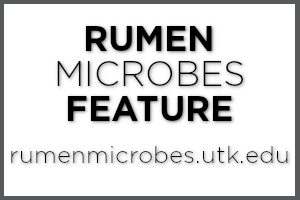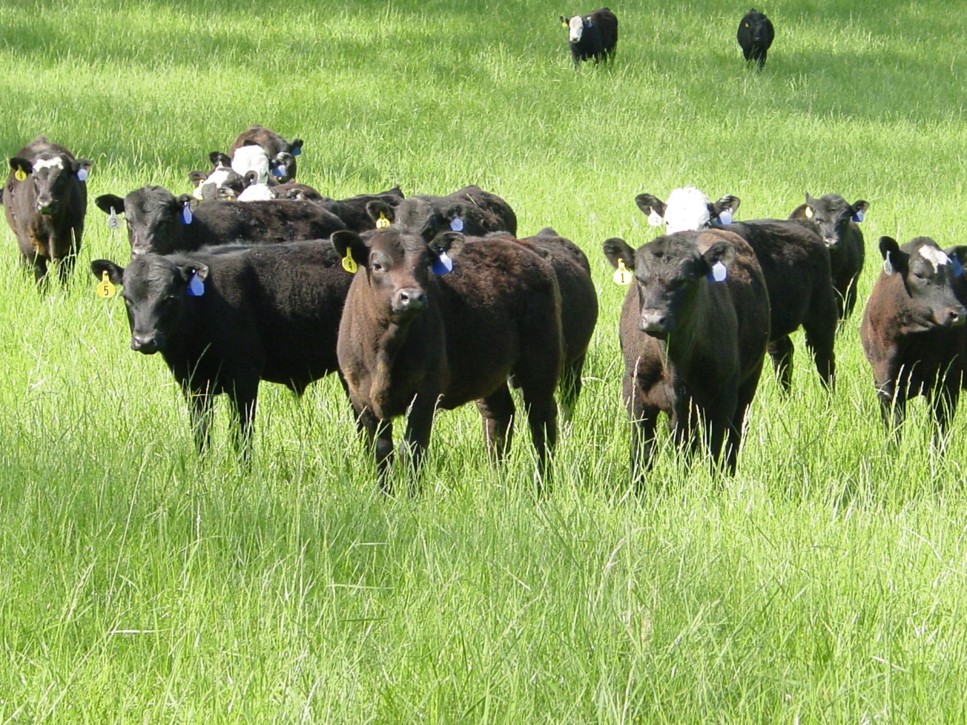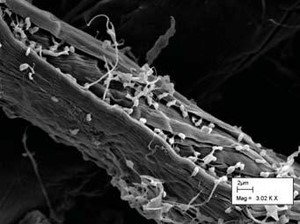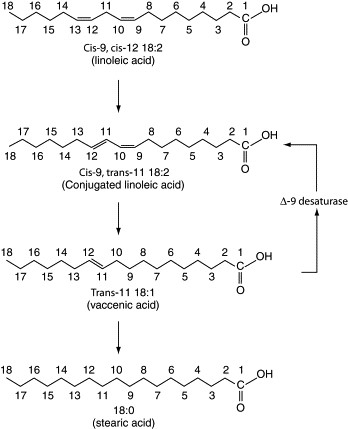
Butyrivibrio fibrisolvens is a non-spore-forming, anaerobic, curved rod-shaped bacterium. It has a high capacity to produce butyrate, which plays an important role in the physiology and metabolism of the intestine and its tissues.
Click the image hotspots to learn more about this featured microbe.
This month’s feature created by: Brooke Clemmons

Learn more

Butyrivibrio fibrisolvens is one of the most commonly-found bacteria in the rumen. Photo courtesy of EPA
Learn more

B. fibrisolvens can break down plant structural carbohydrates (hemicellulose and pectin), starches, and proteins. Photo courtesy of Lydia Joubert; USDA publication
Learn more

B. fibrisolvens have “knobs” on their cell walls that allow them to adhere to other cells, including other bacteria and plant cell walls. Photo adapted from Cheng and Costerton (1977)
Learn more

B. fibrisolvens produces conjugated linoleic acid (CLA), which is important for human heart, brain, and visual health. Photo courtesy of C.E. Fernie, in Encyclopedia of Food Sciences and Nutrition (Second Edition), 2003
Follow this link to view all of the interactive presentations for the Rumen Microbes series.